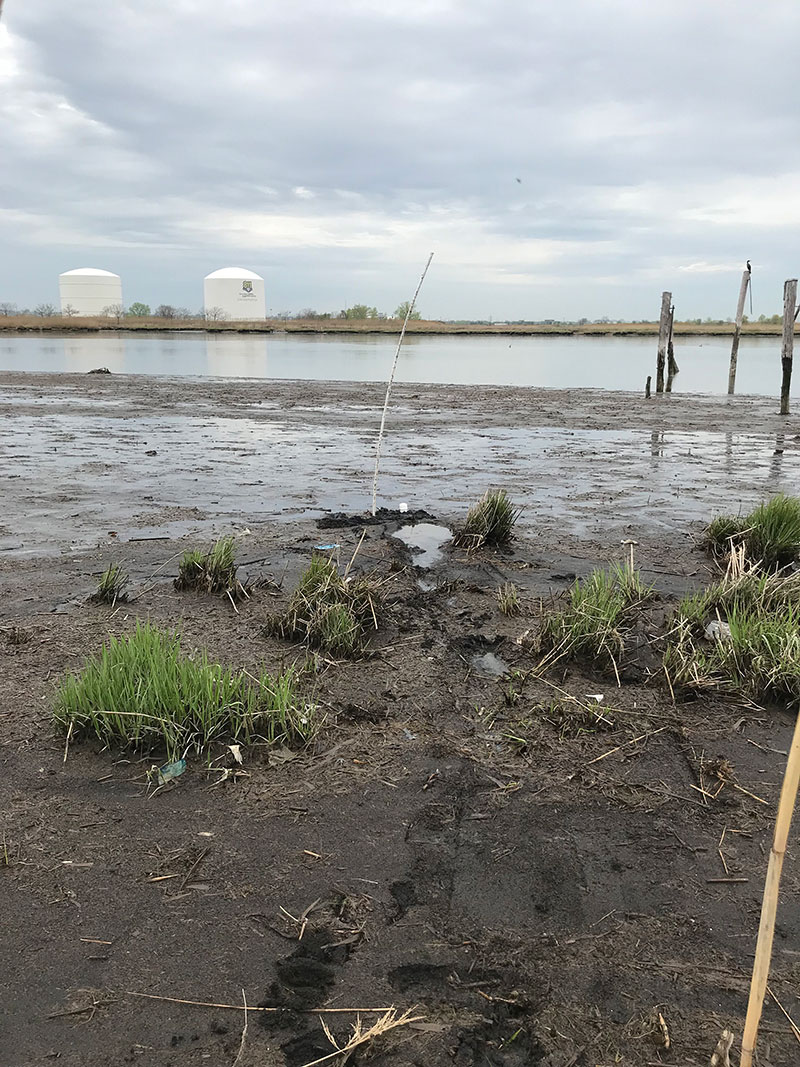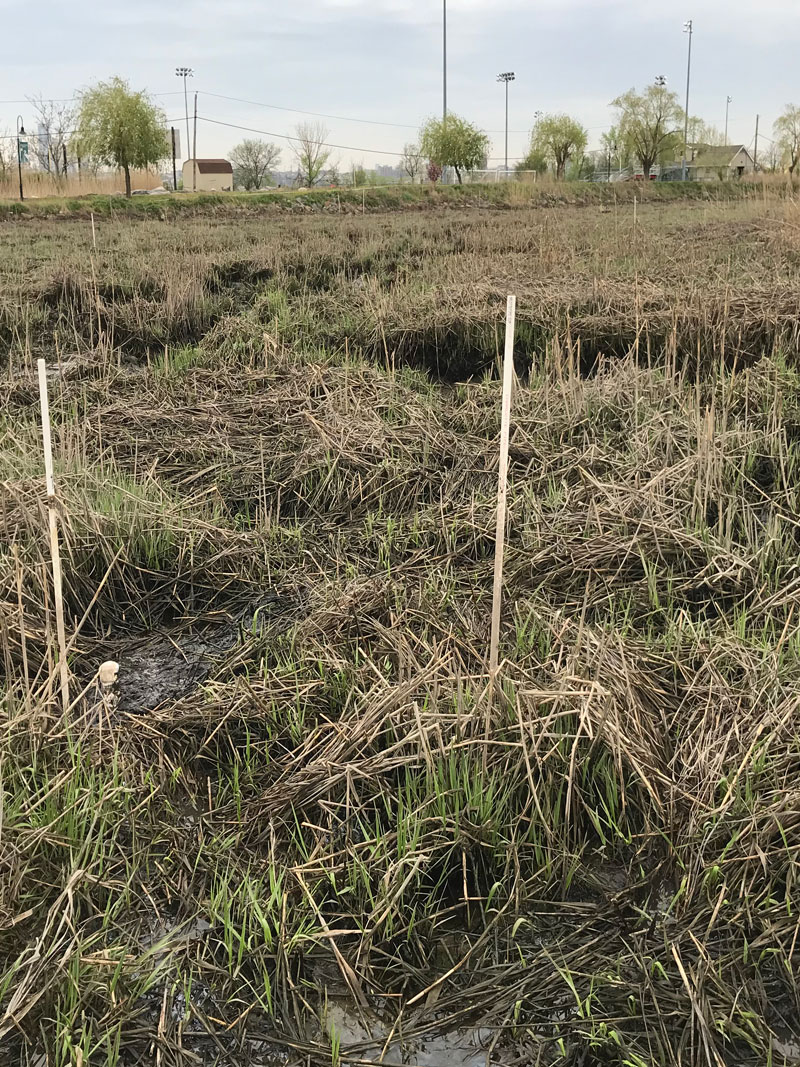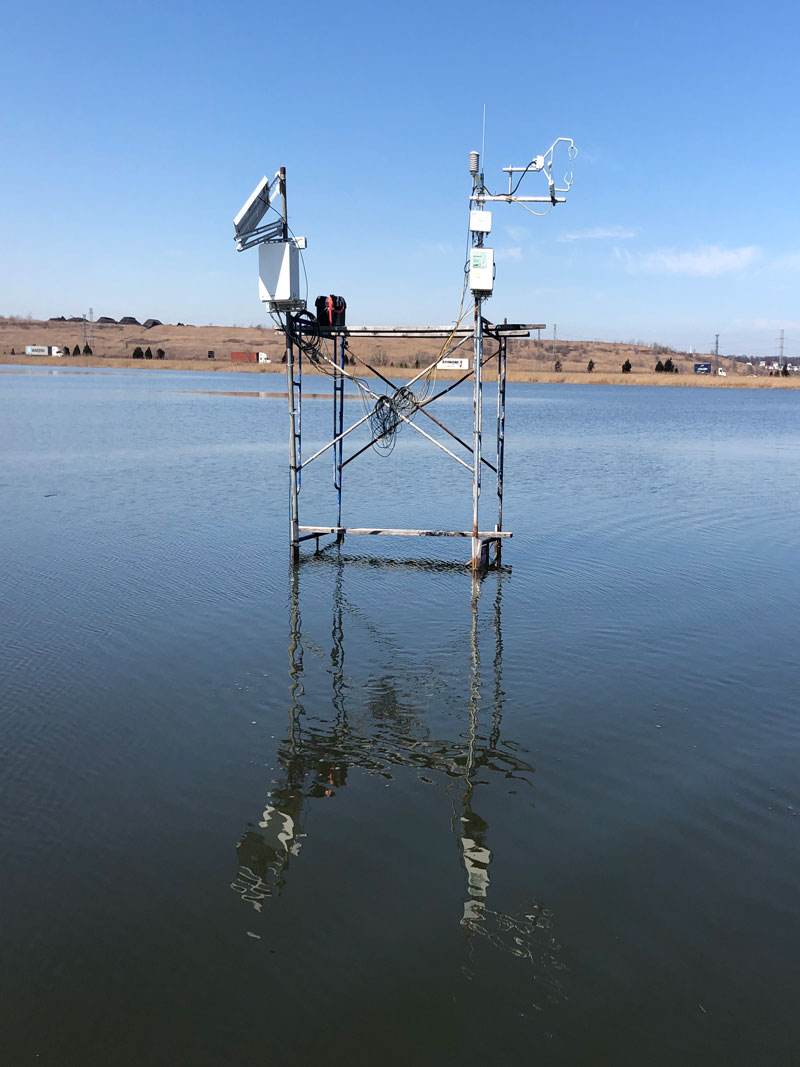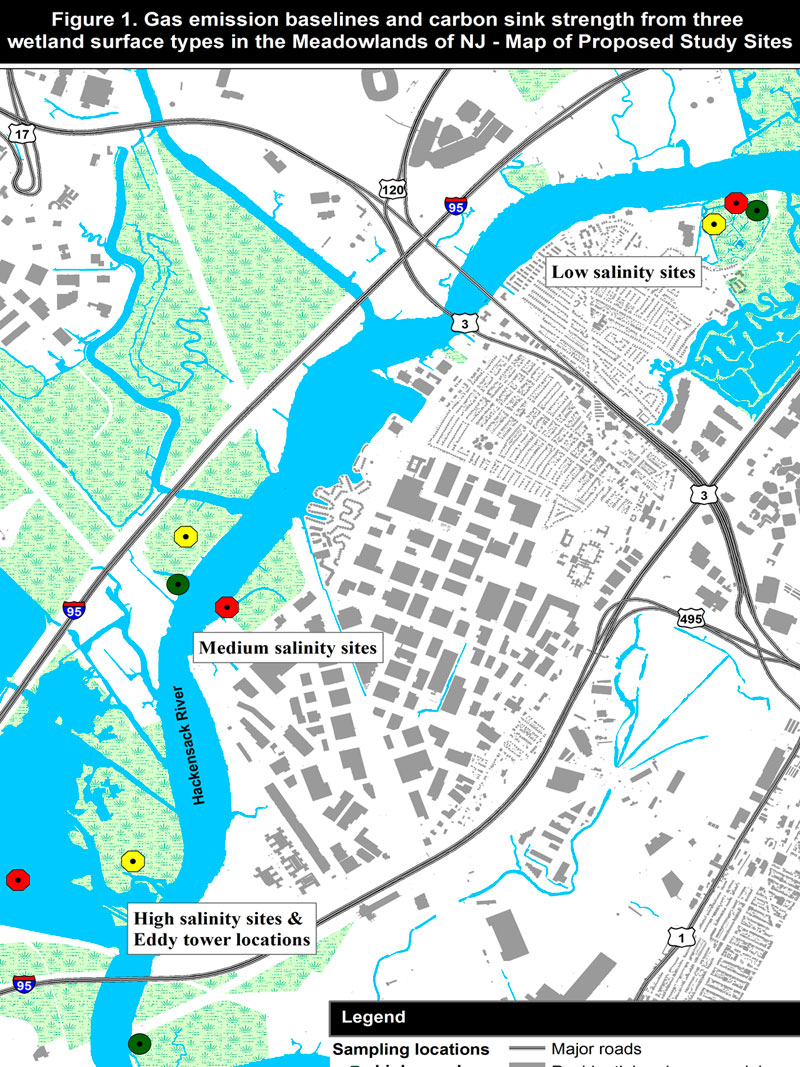Due to climate change and restricted tidal flow from sea walls and dikes planned as part of a resilience project, increased emissions of N2O and CH4 may occur. These factors along with the limited amount of fresh water flowing into the estuary from the upper Hackensack would then offset the reduction in radiative forcing currently attributed to carbon sequestration.
MRRI’s gas emission baseline study to baseline the emissions of carbon dioxide, methane and nitrous oxide and assess the carbon sink strength of the Meadowlands ecosystems..
The study will measure the emissions of CH4 and N2O across a salinity gradient and across marshland surface types and it will assess the carbon emissions and sequestration potential of these same surfaces. The CO2 flux between the marsh canopy and the atmosphere will be measured using eddy covariance methods and the emissions of CH4 and N2O will be determined using static flux chambers. In addition, pore water measurements of SO42-, NO3–, NO2–, NH4+, salinity, pH, and total organic carbon (TOC) will be measured from all locations where gas emissions are measured. Tidal influence on CO2 fluxes will be determined by continuous measurements of water elevation near the sampling sites
Outputs from this study will become the basis for developing strategies that will inform future enhancement and mitigation actions on introducing adaptability features into new resilience designs so that marshlands maintain their terrestrial carbon sequestration function and are not offset by emissions of CH4 and N2O as result of more frequent coastal storms and associated sea level rise. Results from this study will also be used for testing future sensitivity and adaptability of marshlands to climate and related global changes.




